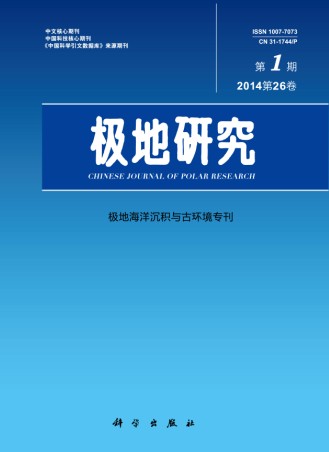|
|
MINERALS IN SURFACE SEDIMENTS IN THE WESTERN ARCTIC OCEAN AND THEIR SOUCES
Dong Linsen, Shi Xuefa, Liu Yanguang, Fang Xisheng, Chen Zhihua, Wang chunjuan, Zou jianjun, Huang Yuanhui
2014, 26 (1):
58-70.
DOI: 10.13679/j.jdyj.2014.1.058
Mineralogical analysis was performed on bulk sediments of 79 surface samples by the X-ray diffraction (XRD) method, combined with ocean currents and geological background, the sources of the mineral assemblages partitions have been investigated.Mineral assemblages and distribution indicate that material sources in the study area are complicated:: (1) Feldspar is high in the sediment of Chukchi Sea near the the Bering Strait, the sources are sediments from Anadyr River carried by Anadyr current. Sediments in the west side of the Chukchi Sea, also rich in feldspar, and compared with other area, the content hornblende of is high, which is t subject to Anadyr stream and Siberian Coastal Current carried sediments from Siberia where covered some volcanic and sedimentary rocks. Sediments in the eastern Chukchi Sea are rich in quartz, the sources are the Yukon River and Kasikuimu river sediments carried by Alaska coastal current. Sediments in the northern Chukchi Sea are rich in quartz and Carbonate, mainly carried by Mackenzie River.(2)In the sediments of south and center of the Canda basin, calcite and dolomite are very low,mainly due to the little impact of Beaufort gyre which can carried carbonates from Canadian Arctic Islands, and compared with other area, the content of mica is high,so the Laptev sea sediment become the main sources. In the other deep sea area, calcite and dolomite are very high,because of the sediments carried by Beaufort gyre from Canadian Arctic Islands(Banks Island and Victoria Island), and Siberia Laptev Sea also provide small parts of the sediment. In addition, Atlantic mid-water contributed some fine-grained material for the entire deep sea of the western arctic ocean.
Related Articles |
Metrics
|

